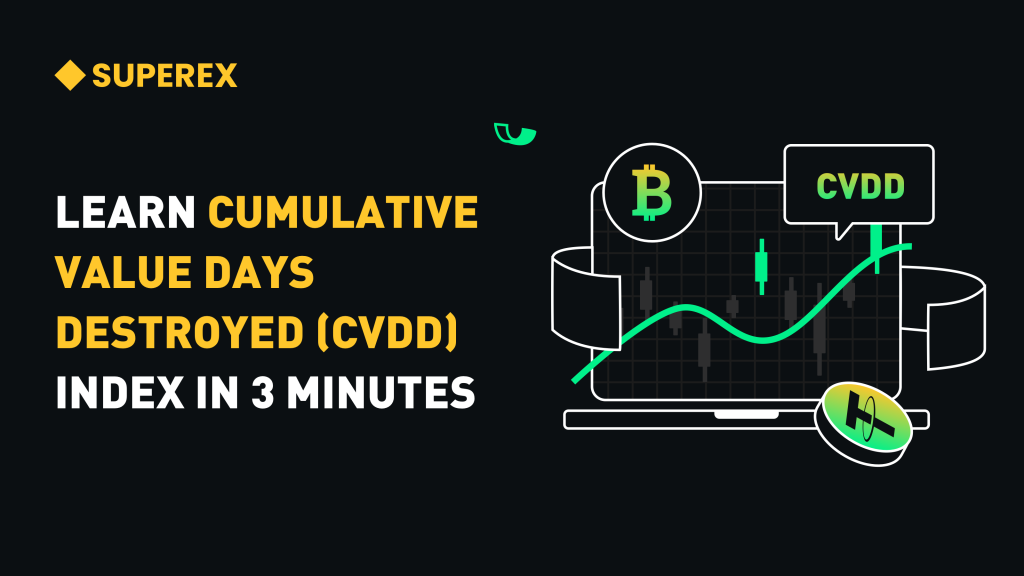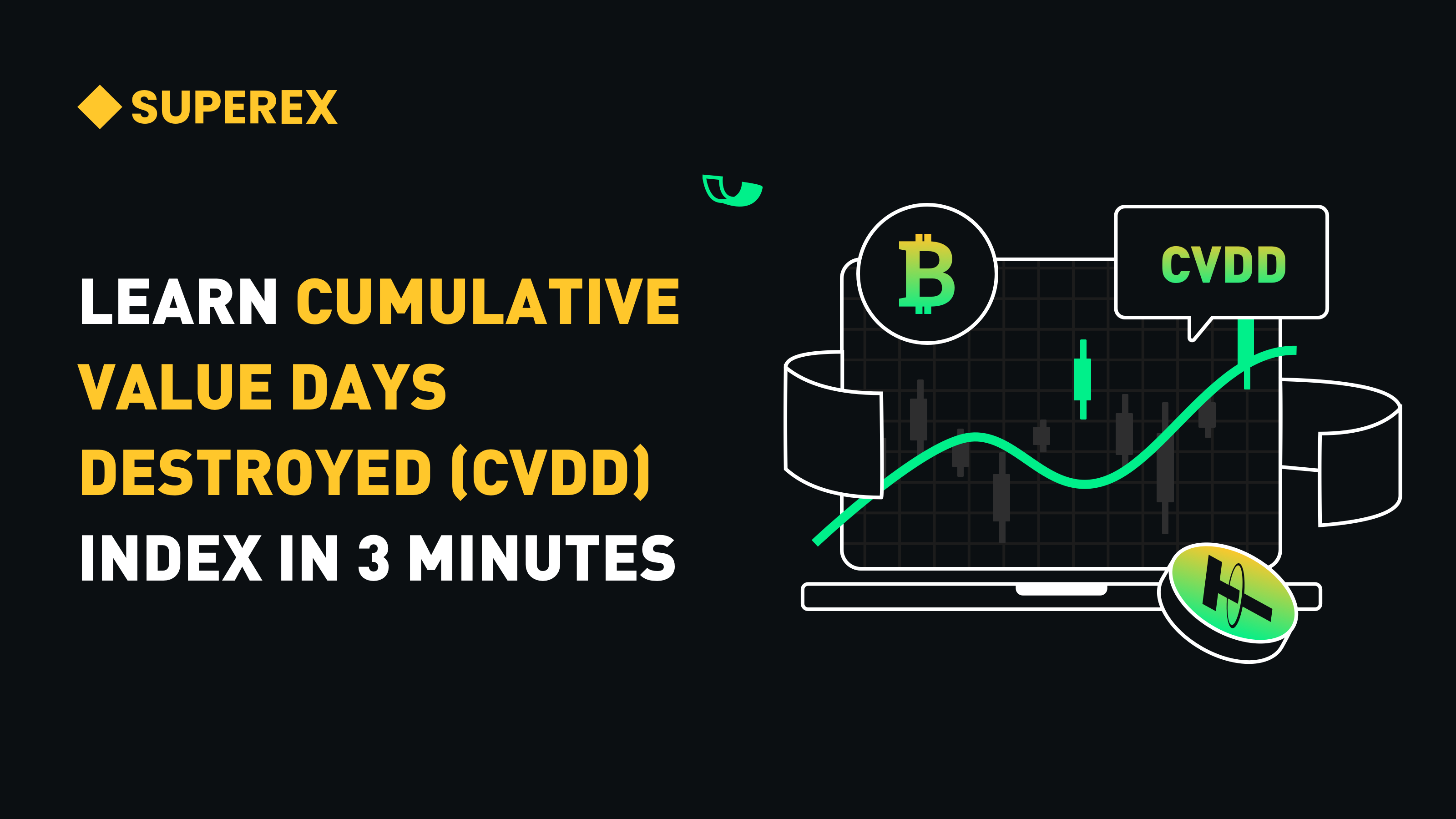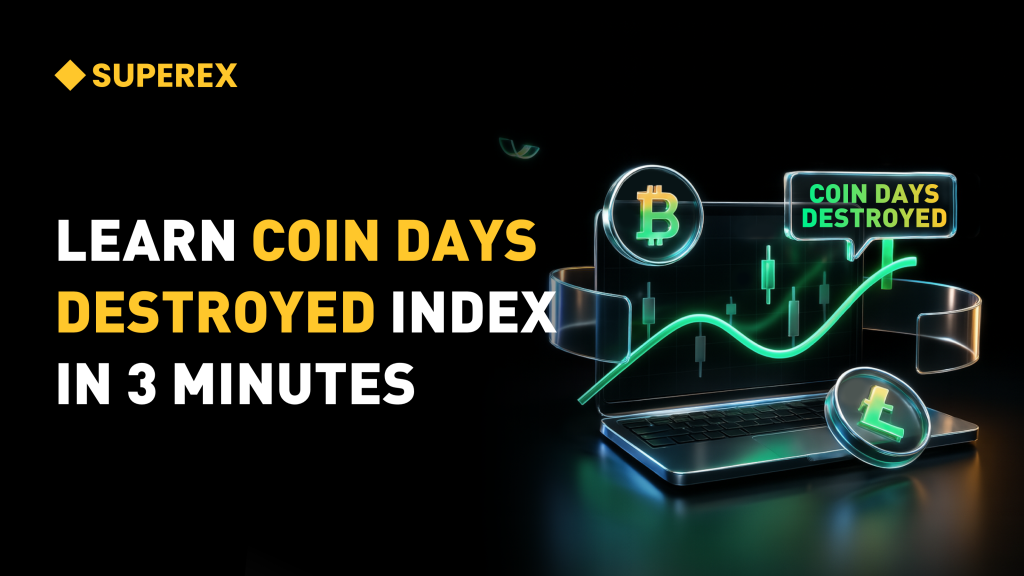LEARN CUMULATIVE VALUE DAYS DESTROYED (CVDD) INDEX IN 3 MINUTES——BLOCKCHAIN 101

Welcome back to our exclusive crypto metrics series. This is our third dedicated lesson on crypto market indicators. If you’d like us to cover a specific metric, feel free to leave your requests in the comments.
Today, we’re focusing on Cumulative Value Days Destroyed (CVDD), a metric pioneered by cryptocurrency analyst Willy Woo. Built upon the concept of Coin Days Destroyed (CDD), CVDD tracks both the age and dollar value of Bitcoin being sold by long-term holders.
In just 3 minutes, we’ll break down CVDD’s core concepts and practical applications.
- Click to register SuperEx
- Click to download the SuperEx APP
- Click to enter SuperEx CMC
- Click to enter SuperEx DAO Academy — Space

The 4 Foundational Principles of CVDD
- Coin Days Destroyed (CDD): When Bitcoin held for N days moves, it “destroys” N coin-days.
- Transaction Value Weighting: CVDD incorporates both coin-days destroyed and the USD value at transaction time, improving capital flow accuracy.
- Time-Weighted Accumulation: CVDD exponentially smooths these values into a trendline.
- Statistical Benchmark: CVDD often acts as a market support line, crucial for bottom predictions.
How CVDD Predicts Market Bottoms?
During deep corrections, CVDD frequently serves as a key support zone, signaling potential bottoms. Key signals include:
- Long-Term Holder Capitulation: Rising CVDD suggests large-scale sell-offs—while prices may still drop, the bottom nears.
- Historical Support: Bitcoin prices touching CVDD often indicate oversold conditions, offering prime accumulation opportunities.
- Extreme Bearish Sentiment: When CVDD flatlines at prolonged lows, it reflects maximum fear—a classic bottom indicator.
Calculating CVDD
The formula is straightforward:
- Compute CDD:
CDD=Transaction Amount×Holding Days
- Accumulate & Normalize:
CVDD=∑(CDD×Transaction Price)/Supply
This cumulative approach filters short-term noise, clarifying long-term trends.
Combining CVDD with Other Metrics
While powerful alone, CVDD works best when paired with:
- MVRV Ratio: Values <1 often coincide with bottoms.
- Puell Multiple: Confirms lows via miner revenue trends.
- 200-Week MA: Prices near CVDD frequently align with this moving average.
Conclusion
CVDD in Two Sentences:
- It measures “the dollar-weighted shock when long-term holders sell.” Higher values mean more “OGs” are dumping.
- Think of CVDD as the “HODLer Capitulation Gauge”—spikes signal veteran exits; low values show diamond-handed conviction.
As a pivotal on-chain metric, CVDD offers high-probability bottom signals. While not infallible, combining it with other data helps investors make smarter decisions. For long-term players, CVDD is essential.







Responses